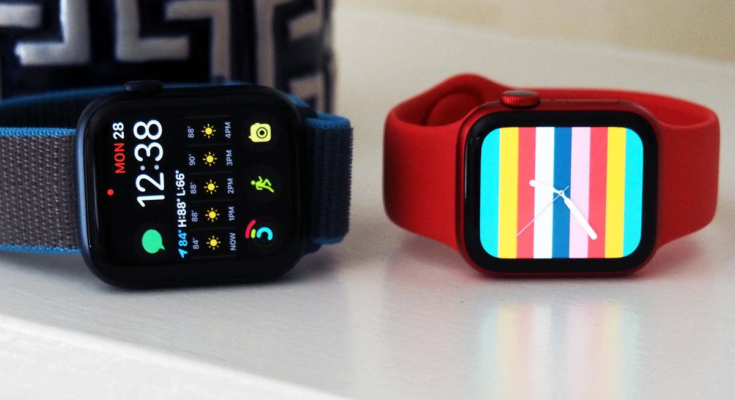
For the last few months, the Apple Watch Series 7 was expected to debut alongside the iPhone 13 lineup next Tuesday. However, recent reports about production issues cast some doubts over that timeline. Now, it looks like the smartwatch is back on track to ship later this month.
The news comes from a new investor report from good, ole reliable Apple analyst Ming-Chi Kuo (via MacRumors). In November, Kuo said that the Series 7 was due for a significant redesign, and in recent weeks, leaked images of the Series 7 seemed to show a slightly larger screen and a flat-edge design reminiscent of the iPhone 12. Last week, Nikkei Asia and Bloomberg both wrote that the new design was causing problems with test production, delaying the watches from entering mass production as previously planned.
Kuo’s latest report adds a little more detail. The Series 7 purportedly has a more durable display panel that uses a new contact design that required a new production process. It also needed to use new suppliers, including LG Display, Young Poong, and Jabil to help with more efficient and economical OLED production. Kuo says that issues surrounding this panel module have since been resolved by making adjustments through a series of design experiments. As a result, Kuo says he expects mass production for the Series 7 to begin in mid-September and for shipments to begin in late September.
This makes it a lot more likely that we’ll actually hear an announcement about the Series 7 next week, though it may not be immediately available. This has been echoed by Bloomberg’s Mark Gurman, who predicted last week that the watch would be announced next week but would ship late, or in smaller quantities.
It’s not a Kuo report if we don’t hear a little something about future Apple products as well. This time around, Kuo mentioned he’s optimistic for next year’s Apple Watch, as it will include new health features—specifically, the ability to measure temperature. This dovetails with a recent Wall Street Journal report that contends Apple is working on a number of advanced health features, including the ability to measure blood pressure and body temperature. The body temperature sensor will reportedly help give users more insight into fertility planning. There are also a ton of other functions that a body temperature sensor could be useful for. Recovery trackers like Whoop and Oura Ring use them to evaluate the quality of sleep, while other researchers have been studying whether skin temperature data from wearables could potentially help detect infectious diseases.
G/O Media may get a commission



